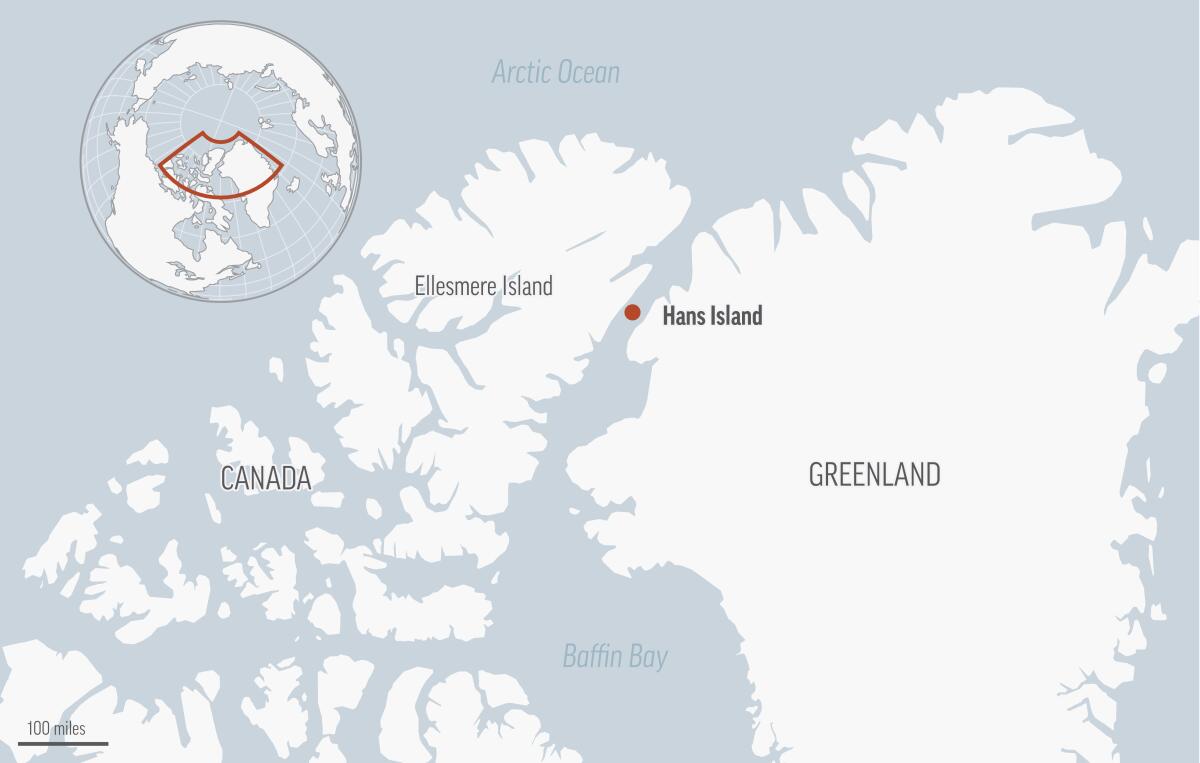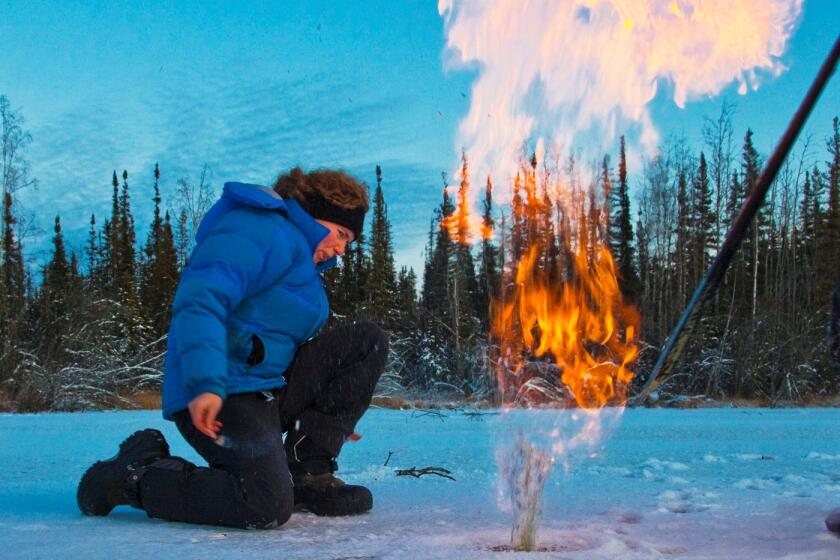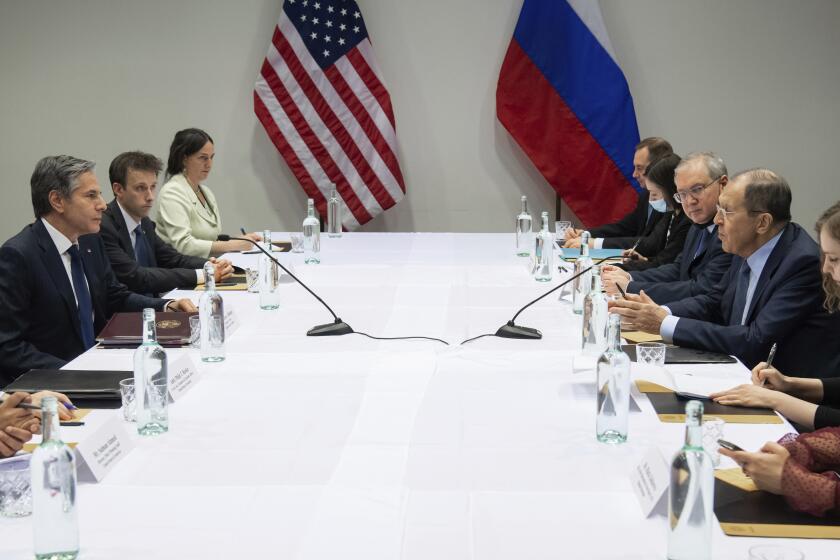Canada and Denmark end their 49-year-old feud over a barren Arctic rock

- Share via
COPENHAGEN — A territorial dispute between Denmark and Canada over a barren and uninhabited rock in the Arctic that has led to decades of friendly friction has come to an end, with the two countries agreeing to divide the tiny island between them.
Under Tuesday’s agreement, a border will be drawn across the half-square-mile Hans Island in the waterway between the northwestern coast of the semi-autonomous Danish territory of Greenland and Canada’s Ellesmere Island. The rock has no known mineral reserves of value.
“It sends a clear signal that it is possible to resolve border disputes ... in a pragmatic and peaceful way, where all the parties become winners,” said Danish Foreign Minister Jeppe Kofod. He said it was “an important signal now that there is much war and unrest in the world.”
Canada and Denmark agreed in 1973 to create a border through the Nares Strait, halfway between Greenland and Canada. But they were unable to agree which country would have sovereignty over Hans Island, which lies about 680 miles south of the North Pole. In the end, they decided to work out the question of ownership later.
In the following years, the territorial dispute — nicknamed the “whiskey war” by media — raised its head multiple times.
In 1984, Denmark’s minister of Greenland affairs raised a Danish flag on the island, buried a bottle of Danish schnapps at the base of the flagpole and left a note saying, “Welcome to the Danish island.” Canadians then planted their own flag and left a bottle of Canadian brandy. Since then, the countries have in turns hoisted their flags and left bottles of liquor in a spirited, if harmless, dispute.
Take it from a permafrost scientist who takes her kids on research expeditions: There’s a way to talk to children about global warming that encourages inquiry rather than despair.
In 2002, Nana Flensburg was part of a Danish military crew that stood on the cliff to perform a flag-raising ceremony. Denmark’s Politiken newspaper quoted her Tuesday as saying in her diary that “among the stones in the cairns were lots of bottles, glasses, etc., with documents that informed about previous visits to the island.”
The agreement will enter into force after internal procedures in the two countries are completed. In Denmark, the parliament must first give its consent to the agreement.
“It’s a win for Canada. It’s a win for Denmark,” Canadian Foreign Minister Melanie Joly said, adding in an allusion to Russia’s invasion of Ukraine: “We’re showing other countries how territorial disputes can be resolved. ... What we’re saying to [Russian] President [Vladimir] Putin is: ‘We have the best way to settle disputes.’”
The two foreign ministers also exchanged bottles of whiskey.
As climate change transforms the Arctic, Russia moves its military in. Secretary of State Blinken raises objections in first meeting with Russian counterpart.
Although both countries have sent warships to the island, there was never any risk of a shooting war. Both sides resolved to settle the problem peacefully and talks began in 2005.
The agreement means the United States will no longer be the only country with which Canada shares a land border.
“We now have a border with the EU,” Joly said. Denmark is a member of the 27-nation European Union.
The agreement also settles maritime boundaries around the island that could have grown in importance as global warming in the Northwest Passage potentially opens the channels of Canada’s Arctic islands and shortens the voyage from Europe to the Far East. The U.S., Canada, Russia, Denmark and Norway have been staking claims in the Arctic.
The settlement also gives Indigenous groups access and rights of use to Hans island.
More to Read
Sign up for Essential California
The most important California stories and recommendations in your inbox every morning.
You may occasionally receive promotional content from the Los Angeles Times.












